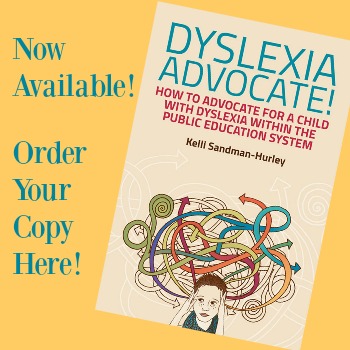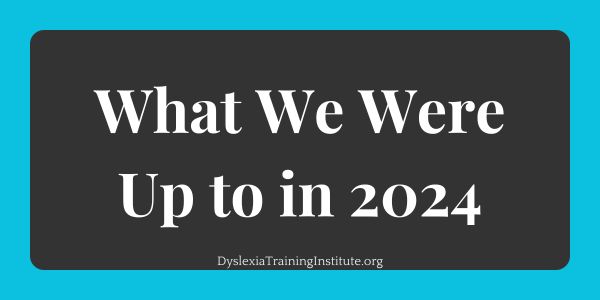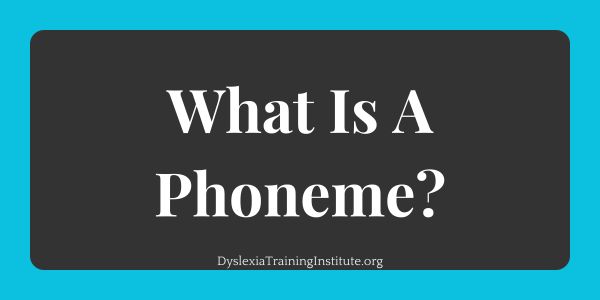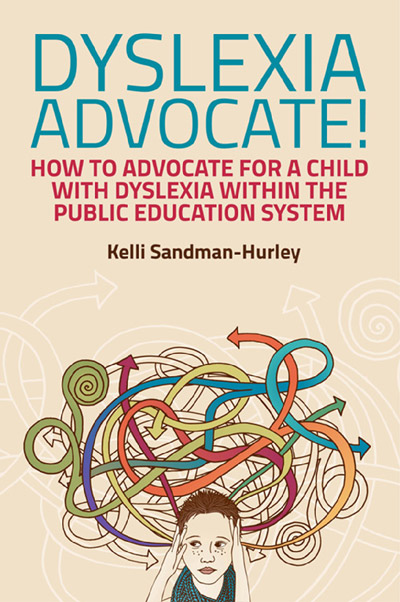
As the dyslexia awareness movement marches forward and starts to become more and more visible to the public and the powers that be, I think it is time to stop, take a breath and think about where we are today. What do we know about dyslexia? What advice are we offering parents? Are we being careful stewards of the information science has provided us? What is most alarming to me is that I hear parents and professionals stating that only one intervention is appropriate for all kids with dyslexia and I think whenever a group demands one intervention by name, it worries me.
For those of us who have worked with more than one student with dyslexia, we know that one intervention does not work for everyone. We know how complex dyslexia is and that many kids with dyslexia also have co-existing struggles with attention, speech and executive function. Many are now asking for a one-size-fits all approach for a complex construct. I think we have to be make sure that we are remembering to keep evolving in our understanding of dyslexia and our understanding of how English is structured. We don’t have all the answers. We have to remember to ask the researchers how they are defining reading in their studies and how they determining that their subjects have dyslexia. We have to include and examine the ideas and cautions put forth by people like Steven Strauss or Julian Elliott and appreciate them for making us think about how we are defining and assessing dyslexia. It is irresponsible to dismiss those with differing opinions, who are presenting facts, because they challenge our current beliefs. That takes us down a dangerous path. There has to be a squeaky wheel and in this case, these squeaky wheels have some valid points with evidence. I have also noticed people dismiss squeaky wheels without actually reading their points – this is also dangerous.
I have concerns that some dyslexia professionals are making claims that they have the only intervention that is appropriate for a child with dyslexia. But that is an impossibility due to all the fact that no human has the same needs as the next human. I recently watched a video from a dyslexia professional who was declaring she knew what all the pathways in the brain are doing when we are reading and how to ‘open’ them. Not even a scientist with a Phd would make such a claim about the brain, there are too many variables and the brain is too complex, they can make really good educated guesses, but professionals should not be making promises to parents on the premise that we completely understand the brain.
So, look out for the following red flags and check yourself. Before we begin to assert that there is one way to get to improved reading and writing, take a good hard look at the individual profile. Red Flag #1: A dyslexia professional who has ‘the answer” which is equivalent to snake oil and that always makes me nervous. Red Flag #2: A professional who uses the same approach with every student. This is a red flag because many students with dyslexia come to us with more than dyslexia. If the tutor does not know how Executive Function is affecting their students’ ability to read and spell and are only working on the reading, then progress will be affected. If the tutor does not consistently allow the student time to process their answers and not offer the answers (which almost everyone does until they unlearn this need to fill in the silence) the student will not learn to be independent. Red Flag #3: The professional who purports to know exactly how the reading process in the brain works without adding some qualifying words.
There are still questions around how reading in fMRI studies is defined and what about those kids who can read but can’t spell? The bottom line is that kids have reading and spelling problems for many different reasons and that dyslexia is one of those reasons. The way to help them is to look at their individual profile and determine which approach is the best for that child. It might be Orton-Gillingham, it might be Structured Word Inquiry, and it might be Lindamood-Bell and it might be the combination of all three and something else. The key is the teacher and if that teacher has enough knowledge about teaching and English to respond to the individual needs of the students and any co-existing challenges those students have. Having said all of that, I do believe the intervention for those with dyslexia should have a basis in teaching the structure of English, how that is implemented needs to individualized. It should be described, not labeled and named. I think it is unhealthy for the professional in the dyslexia community to state that one thing they are doing works for everyone, if that was true, then we would eradicate dyslexia in one fell swoop. Dyslexia is real, now we remind must remind ourselves to keep it real.






Thank you so very much for this very well written blog. You are so correct every child with dyslexia is different and what works for one won’t necessarily work for another.
You stated it all so well. This is not a one size fits all situation!!
Thank you Kelli. As is said, one shoe does not fit all. There are, as you point out too many variables, yet we continue to seek the Holy Grail–we all do and for various reasons, but there is no such thing. I recall reading–and i wish i could find it–something written by J. Jorgeson who, in my words, said it is not the program as much as it is the TRAINED teacher that makes “it” work. If i ever find it, i will post it to you.
You have put into words what I have had difficulty putting my finger on when I hear some tutors speak. Every person is different. I think results are important and knowing when to alter an intervention or use a different tool all together because one is not making enough results is important. It goes beyond dyslexia knowledge, OG knowledge and a child’s learning style.
Well my son has severe dyslexia and learning difficulties and we have seen a women by the name of jill whom has worked wonders for my son..Jill has a center that we fly To from Michigan and so far JILL ROCKS!! 5 years of struggling with schools and specialist that arent helping..We are using the Orton Gillingham approach with our jill and she even explained that every child is different and many times she has to change the dynamics for each child she sees because we all learn differently..My son is a sensory learner so she come up with ways to help stimulate and get that info into his brain…And boy when he got it..He Got it!! Don’t be so quick to judge untill you see it yourself with you own eyes as I did..My son actually will sit and read without a fight, his processing is faster so guess what….the one on one instruction is working..dont be so quick to judge..You go jill! Look at all those proud kids and parents and look at those schools that should be shamed!! Kim siebert
I think that is great and I am glad to hear that your son got the help he needed. If you read the article clearly, I support the use of OG if it works for the child. So great to hear that your son is a success story.
My son’s Montessori teacher who is an OG tutor also informed us that she believed our 5 yr old was Dyslexic it was the greatest gift we have ever gotten. We were given the opportunity to seek early intervention. At that point I buried myself in all things and schools and people in the Dyslexia Community. That was the most frustrating and disheartening experience ever! I just met more and more weary, work out, money drained parents that still had children struggling with Dyslexia. I wanted to just lay down and cry with them and I had not even officially started the journey. I was in the research phase! The one thing that they all had in common is that they had either pulled their kids out of their local school and we’re paying 20k+ per year to a do axial OG school or they were paying an OG tutor high dollars to try and make public school do-able. You want to know what was missing from ALL their lives…RESULTS. Thank Gog I had a friend give me the number of someone that changed my son’s life. My son actually has a chance at success in school and that was not going to be an option 5 months ago. He was already starting the “I hate school” thing because there was no succes for him to feel, only failure and lagging behind his peers. Before committing to ANY dyslexia intervention I would demand to see results from prior and current students. After you commit to a program I would make sure that YOUR child is seeing results that actually translate into real life school work. For us Jill has given my son those results. She watches my son like a hawk in their one on one session and if she can see that something hasn’t quite stuck with his brain she will try a different approach and make sure that we pop back and re-visit concepts to make sure that the foundation is there. Whether or not you are a fan of the terminology of “opening brain pathways” or not…it is a concrete way of communicating to us parents how our brains learn. We learn in sequence and establish foundations of information and the layer onto that foundation more complex concepts. If the foundation is not there you can’t put anything else on top of it. It has been an amazing experience to watch my son’s brain establish phonetic foundations and build up to consonant blends and more complex reading rules. The other piece of this puzzle is that in addition to an effective intervention method you have to have a parent that is also going to do the lessons with the child. We go to Jill once a week and then she sends me the information I need to continue practicing with my son. Without parent commitment to the work there will be no improvement…and Jill is also clear about that part of the deal. I am thankful every day that I was told to investigate her intervention along with everything else out there. The results speak for themselves. It would be worth your time to investigate this program a little more closely.
I think that is wonderful. We love a good success story!
Nicely said, I liked it alot. People cann’t judge untill they see for themselves..I investigated jill for almost 10 months , follwed her on facebook, read every post I could find..Thank god I found her because we were drownding here and noone was getting my son after I advocated like crazy and all I was receiving was his processing is so slow, his working memory sucks and where is his long term?? Were slowly working on all these disabilities..one day at a time.. and we are seeing the difference..
I agree that there is “no one program that fits all.” My daughter is dyslexic. We had struggled many years not knowing what was wrong. The public schools wanted to tag her ADD. After having her privately tested, we were informed she was dyslexic. Public schools tried, but didn’t know how to help her, so I started home schooling in 3rd grade. Finally, 12th grade, after many attempts by many sources and thousands of dollars spent, we found Jill. She was able to critique her program to fit my daughter’s needs. Jill gave explanation so I could finally understand how my daughter was thinking. After only seeing Jill a few times, we could see a difference. As we followed Jill’s instructions with homework as well as seeing her weekly, our daughter improved in reading, spelling, and working short term to long term memory. I couldn’t believe it! Our daughters self esteem grew by bounds. Now our daughter is a second year student at a major university and is thriving! This was a dream that I never thought my daughter would be able to do. If this is the same “Jill” mentioned above, she does rock! Jill was our miracle worker!